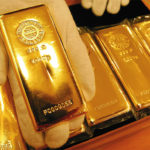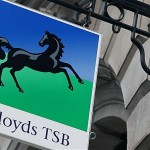Gold retreated from more than four-month high after it became clear that Russian President Vladimir Putin had ordered troops to return to their bases after military exercises concluded amid rising tensions in the pro-Russian Ukraines Crimea region.
On the Comex division of the New York Mercantile Exchange, gold futures for settlement in April fell 0.89% to trade at $1 338.30 per troy ounce by 08:11 GMT. Prices touched a session high at $1 352.80 per troy ounce, while day’s low was touched at $1 337.30 an ounce. Yesterday futures touched $1 355.00, the strongest level since October 30.
Gold futures are up 12% this year and capped the first back-to-back monthly increase in February since the two-months through August, after a recent unrest in emerging markets, including Ukraine, and signs of slowing US growth, boosted demand for haven assets.
However, the precious metal settled last year 28% lower, the steepest annual decline since 1981 as some investors lost faith in the metal as a store of value and amid speculation Fed will continue scaling back its monetary stimulus throughout 2014.
Gold prices were pressured after a report revealed that Russian President Vladimir Putin ordered troops to return to their bases, after exercises near Leningrad finished.
Today the US Secretary of State is expected to visit Kiev. His visit comes after the leaders of G-7 nations said Russian actions are seen as clear violation of Ukraines territorial integrity, while at the same time the Russian Federation told the United Nations its intervention in Crimea region is legal.
“Gold bid strongly with the prospect of a Russian/Ukraine conflict dominating the market,” Victor Thianpiriya, an analyst at Australia & New Zealand Banking Group, said in a Bloomberg interview. “Looking beyond the geopolitical haze, Chinese physical demand remains largely absent, suggesting the current round of gains may retrace should the tension in the Ukraine ease.”
Chinese demand
On the Shanghai Gold Exchange, trading volumes for spot bullion of 99.99 percent purity have been lower in the past four days, compared to the two-week high registered on February 25th.
Higher bullion prices have hurt demand in China, which according to data by the World Gold Council released last week, overtook India as the largest global consumer last year, consuming a record 1 066 tons.
Fed stimulus outlook
Federal Reserve Chair Janet Yellen said last week that central bank’s officials were “open to reconsidering” the pace of reductions in monthly bond purchase, if the economy falters, in contrast with her comments made earlier in February, that US economy has gained enough strength in order to withstand reduction of monetary stimulus. Fed officials next policy meeting is scheduled for March 18-19th.
The central bank announced in December that it will pare monthly bond-buying purchases by $10 billion, after which it decided on another reduction of the same size at the meeting on policy in January, underscoring that labor market indicators, which “were mixed but on balance showed further improvement”, while nation’s economic growth has “picked up in recent quarters.”
Yesterday the Institute for Supply Management (ISM) reported that manufacturing activity in the United States expanded at a faster than projected pace in February, which eased concerns that the economy may remain vulnerable. The corresponding PMI advanced to a reading of 53.2 last month from 51.3 in January, while analysts had expected that the index will climb less, to 52.0 in February. Values above the key level of 50.0 are indicative of expansion in activity.
Federal Reserve will probably continue to pare stimulus by $10 billion at each policy meeting before exiting the program in December, according to a Bloomberg News survey of 41 economists, conducted on January 10th.
Assets in the SPDR Gold Trust, the biggest bullion-backed ETP, remained at 803.70 tons yesterday for a fourth day. In 2013, the fund has lost 41% of its holdings. A total of 553 tons has been withdrawn last year. Billionaire hedge-fund manager John Paulson who holds the biggest stake in the SPDR Gold Trust told clients at the end of last year that he wouldn’t invest more money in his gold fund because it isn’t clear when inflation will accelerate. However, a government report revealed that the owner of the largest stake in the SPDR Gold Trust, kept his holdings unchanged in the fourth quarter of 2013.





